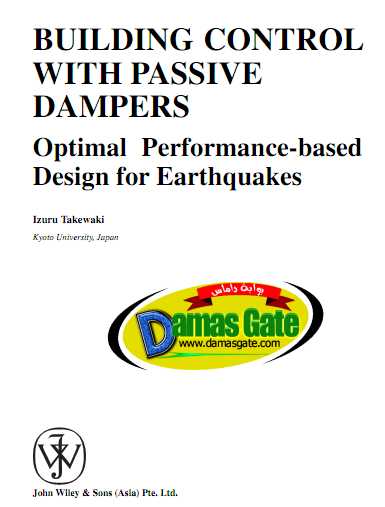Building Control with Passive Dampers Optimal Performance-based Design for Earthquak

Preface
The concept of performance-based design is well accepted in the current structural
design practice of buildings. In earthquake-prone countries, the philosophy
of earthquake-resistant design to resist ground shaking with sufficient stiffness and
strength of the building itself has also been accepted as a relevant structural design
concept for many years. On the other hand, a new strategy based on the concept
of active and passive structural control has been introduced rather recently in order
to provide structural designers with powerful tools for performance-based design
(Kobori, 1993; Housner et al., 1994, 1997; Soong and Dargush, 1997; Kobori
et al., 1998; Hanson and Soong, 2001; Casciati, 2002; Johnson and Smyth, 2006).
Passive control systems are often used to meet flexibly the requirements posed by
this performance-based design. However, the structural engineers do not appear
to have the tools for the optimal selection and placement of these passive control
systems.
Download
*